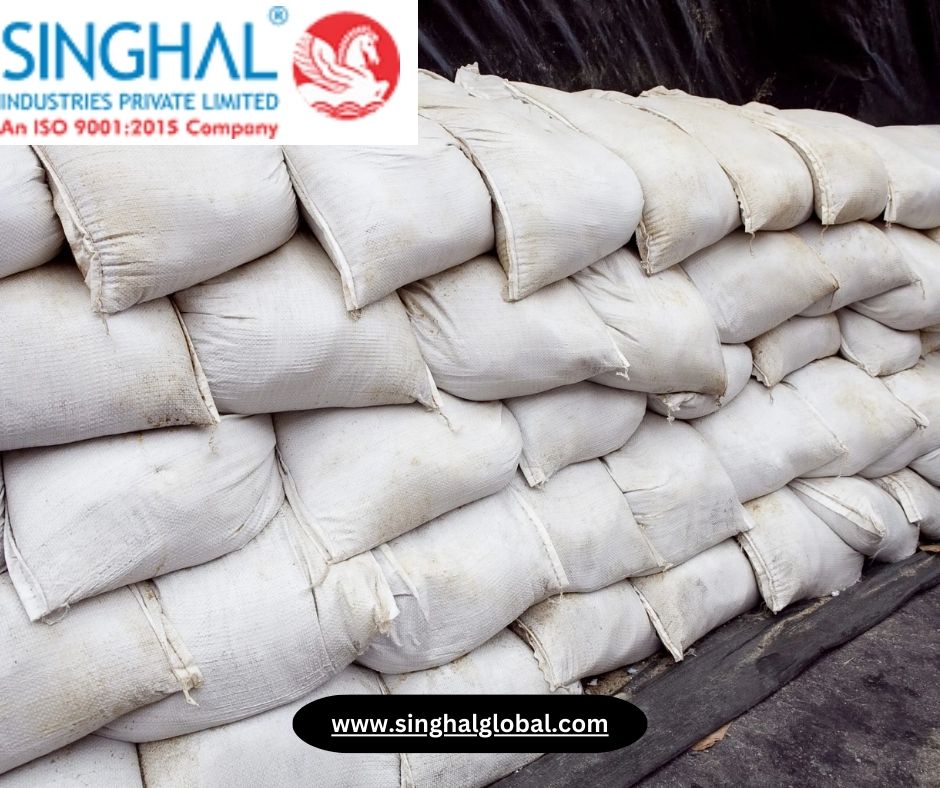Geotextile bags, commonly referred to as geo bags, have emerged as indispensable tools in industrial and environmental applications. These durable, flexible bags are crafted from permeable geotextile fabrics and are primarily used for erosion control, flood prevention, and slope stabilization. Their growing demand is driven by their efficacy in addressing complex challenges related to infrastructure and environmental conservation. With a wide range of sizes, materials, and functionalities, geotextile bags are shaping the future of sustainable development in India and beyond.
What Are Geotextile Bags?
Geotextile bags are engineered containers made from woven or non-woven geotextile fabrics. These fabrics are known for their permeability, durability, and resistance to environmental factors like UV radiation, moisture, and chemicals. Geotextile bags are filled with sand, soil, or other materials and are used for applications ranging from shoreline protection to riverbank stabilization.
In India, the demand for geotextile bags has soared due to the increasing focus on infrastructure development and environmental management. Leading manufacturers and geo bag suppliers in India offer high-quality products tailored to meet diverse industrial needs.
Features of High-Quality Geotextile Bags
- Durability: Geotextile bags are designed to withstand harsh environmental conditions, including exposure to saltwater, UV rays, and extreme temperatures.
- Permeability: The fabric allows water to pass through while retaining soil and other materials, making it ideal for erosion control.
- Customizable Sizes: These bags can be customized to suit specific project requirements, ensuring optimal performance.
- Eco-Friendly: Many geotextile bags are made from biodegradable materials, aligning with global sustainability goals.
- Ease of Installation: Lightweight and flexible, these bags are easy to transport and install, reducing labor costs and project timelines.
Industrial Applications of Geotextile Bags
1. Erosion Control
Geotextile bags are widely used to protect shorelines, riverbanks, and slopes from erosion caused by water flow and wind. By stabilizing soil and redirecting water, these bags help preserve natural landscapes.
2. Flood Management
In flood-prone areas, geotextile bags act as barriers to prevent water from encroaching on populated regions. Their ability to withstand high water pressure makes them indispensable during emergency situations.
3. Infrastructure Development
From road construction to railway embankments, geotextile bags reinforce the foundation of critical infrastructure projects. Their strength and versatility ensure long-lasting stability.
4. Waste Containment
Geotextile bags are used in landfills and waste management facilities to contain and segregate waste materials. Their permeability ensures proper drainage, reducing the risk of contamination.
5. Agricultural Use
In agricultural settings, geotextile bags are used for soil stabilization, water management, and crop protection. They help farmers optimize resources while protecting the environment.
Advantages of Using Geotextile Bags
- Cost-Effective: Compared to traditional methods, geotextile bags offer a more affordable solution for large-scale projects.
- Versatility: Suitable for diverse applications across industries.
- Sustainability: Promotes environmentally friendly practices by reducing soil erosion and preventing pollution.
- Longevity: High-quality geotextile fabrics ensure the bags remain functional for extended periods.
Geotextile Bag Suppliers in India
India is a leading hub for geotextile bag manufacturing, with numerous suppliers catering to both domestic and international markets. For businesses seeking affordable Geo bag prices India, local manufacturers provide cost-effective solutions without compromising quality.
What to Look for in a Supplier:
- Quality Standards: Ensure the supplier adheres to global quality benchmarks and uses durable materials.
- Customization Options: Choose a supplier that offers customized sizes and designs to meet specific project requirements.
- Competitive Pricing: Compare geo bag prices in India to find a balance between affordability and quality.
- Export Capabilities: For international buyers, opt for Geo fabric bags exporters in India with a proven track record in global markets.
- Sustainability Focus: Prioritize suppliers committed to eco-friendly practices.
Factors Influencing Geo Bag Prices in India
- Material Quality: The type of geotextile fabric used significantly impacts the price.
- Size and Capacity: Larger or higher-capacity bags generally cost more.
- Customization: Special features like branding, UV resistance, or reinforced stitching may increase costs.
- Quantity: Bulk purchases often result in discounts, making it more economical for large projects.
- Supplier Location: Proximity to manufacturing hubs reduces transportation costs, influencing the final price.
Future Trends in Geotextile Bags
The geotextile bag industry is evolving to meet the growing demands of sustainability and innovation. Emerging trends include:
- Smart Geotextiles: Integrating sensors to monitor environmental conditions.
- Biodegradable Fabrics: Reducing the environmental footprint of geotextile products.
- Advanced Manufacturing Techniques: Enhancing durability and performance through cutting-edge technology.
Conclusion
High-quality geotextile bags are revolutionizing industrial applications, offering robust solutions for infrastructure development and environmental conservation. With their durability, versatility, and eco-friendliness, these bags are indispensable for projects ranging from erosion control to waste management. India, with its thriving manufacturing sector, is a global leader in the production and export of geotextile bags. By choosing reliable Geo bag supplier in India, businesses can access top-notch products at competitive prices. As the industry continues to innovate, geotextile bags will play an even more significant role in building a sustainable and resilient future.
Frequently Asked Questions (FAQs)
1. What materials are used in geotextile bags?
Geotextile bags are typically made from woven or non-woven polypropylene or polyester fabrics. These materials are chosen for their strength, durability, and resistance to environmental factors.
2. How can I find reliable geo fabric bags exporters ?
To find trusted geo fabric bags exporters in India, research online directories, check customer reviews, and verify certifications. Opt for suppliers with a proven track record in international markets and a commitment to quality.
3. Are geotextile bags environmentally friendly?
Yes, many geotextile bags are made from eco-friendly or biodegradable materials. Additionally, their ability to prevent soil erosion and promote sustainability makes them an environmentally responsible choice.





Comments